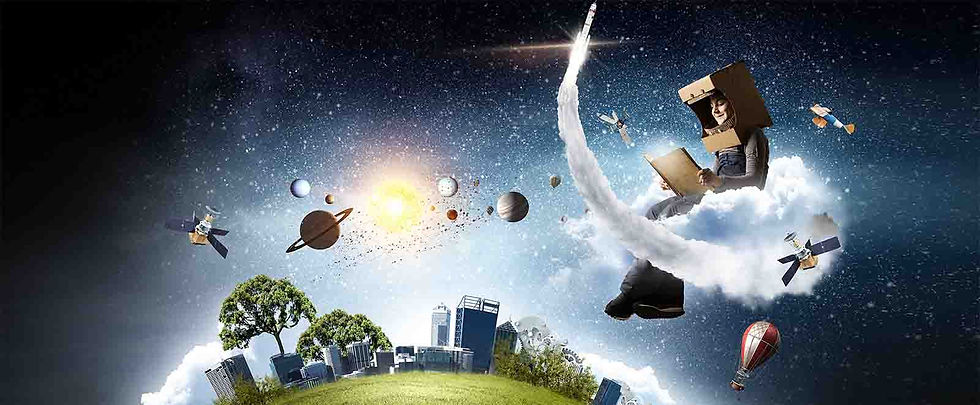When I was a little younger – okay, I mean, a lot younger – the year 2020 seemed so far away. It was a period of nothing more than a wonder of possibilities, since such a time was nothing more than science fiction to me as a child.

Tape drives and floppy disks
Films and television were filled with speculation as to what the year 2020 might bring – there were flying cars and hover boards, talking robots and the ease of commuting from Earth to Mars all seemed so real and tangible. I always wondered what marvels the future would bring, yet the harsh reality of today is that, here in the UK, we’re reeling in the wake of a pre-Christmas election and are still coming to terms with Britain’s exit from the European Union.
Yes, the start of 2020 looks bloody depressing, yet it all seemed so different when I was 10. Humph!
Anyway, despite the harsh reality of today and now being all grown up, looking back, I realize I have had a personal journey of technological marvel. You see, it all began when I received my first computer at 14 – an Oric 1 48K, where I taught myself how to program. I would save and load programs to and from my computer using a cassette (tape) drive. Then, in my first software engineering role in Cardiff, South Wales, I experienced what I now understand today as “instant messaging” and I also had my own email address (internal only) in the late 1980s. I developed software for a very primitive touch screen gaming system – the screen had the finest mesh copper wires, where contact with the screen would indicate a position. Here I would load and save my software to a floppy disk drive and “blow” my program into an EEPROM, which I plugged into a motherboard to run and test my software.
Mobile phones with retractable antennas
I exchanged my cassette tapes and vinyl collection for CDs and all my VHS videos for DVDs in the early 1990s but, today, all my music and videos are digital. Come the mid-1990s, I acquired a personal email address and had access to a very young internet courtesy of CompuServe. I had an amber monitor screen with a whopping 40Mb hard drive – yep, it was cutting-edge technology at the time!
A few years later, I purchased my first analog mobile phone with its retractable antenna – honestly, it was very trendy! My phone would ring and others would turn around to look – I would smile at my onlookers and retrieve my phone from my pocket, looking somewhat smug as I extended the antenna with a glance that said, “Yeah, that’s right, I look good.” This was also a period when Nokia dominated the mobile phone market. Sometime later, I was able to discard my rollfilm in favor of the emerging digital camera – today all my photos and video content resides on my smartphone and in the cloud!
The demise of our high street stores
The internet matured incredibly quickly – blink and you would have missed its evolution. The introduction of the World Wide Web (WWW) in the 1990s made accessing online content easy using uniform resource locators (URLs) – it essentially humanized interaction and visualization of the wealth of content that we have access to today, along with the help of some clever web software and browsers.
I have witnessed the transition from tapes to floppy and hard drives; seen the emergence of both solid state drives (SSDs) and the “cloud” – and this has all come about extraordinarily quickly. Likewise, with the emergence of digital media services such as, Netflix, Amazon Prime, YouTube and Spotify, for example, I haven’t needed to purchase a music CD or DVD in the last 10 years or so. Today, I enjoy the freedom of the immersive and varied digital content on offer, which also goes some way to explaining the demise of the HMV and Blockbuster stores.
The wonder years
With the unfortunate demise of our high street stores, I have seen a shift in attitude and an acceptance of technology. There are those who grew up with the evolution of technology, like me, and there are those who were born into it. Nevertheless, it’s become today’s norm. In fact, I recall setting up my daughter’s first computer in the late 1990s and handing her a keyboard, to which she remarked, “But I don’t know how to type.” In stark contrast, a few weeks ago, I handed her a sheet of paper to show her a diagram and, without thinking, she began to pinch the page in an attempt to enlarge the image.
Boom, there it is, the marriage of technological evolution and its adoption and acceptance!
The shift from analog to digital seems such an obvious one, which we have witnessed with our mobile phones, cameras, television and many other products and services. Yet, I didn’t foresee the huge “digital rush” and whilst we don’t have the flying cars and hover boards, talking robots (Sophia and Alexa don’t count – see “Artificial intelligence: I think therefore I am”), I certainly didn’t expect the revolutionary era of digital transformation. On reflection, it seems a very natural evolution, but it has been an unexpected transition over these wonder years.
Until next time …
Sir Tim Berners-Lee recently shared his reservations, warning us of a “digital dystopia.” He said, "The power of the web to transform people’s lives, enrich society and reduce inequality is one of the defining opportunities of our time.” For me, I don’t think this philosophy should be limited to the web, since “digitalization” has simplified and enriched many aspects of our lives through the technology, apps and services we use daily. As such, we must collectively heed safety and caution in securing our digital worlds.
So, this is where a “lucky number 00000111” Dr. G signs off.
Originally published in Technically Speaking.

Comments